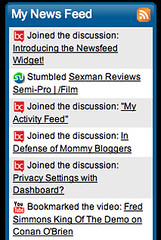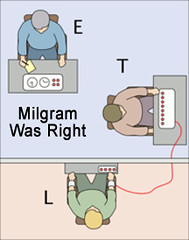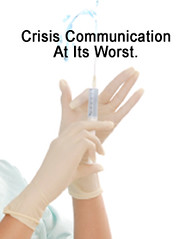According to The New York Times, Alaska Airlines is introducing a system on the Internet to create unique advertisements for people as they surf the Web. Called retargeting by the industry, the ads will consider combined data (demographics and psychographics) from several sources to adjust the ads and ticket offers. The trade off, as always, is online privacy.
“I come from the direct marketing world,” Judy Gern, the chief executive of DesignBlox told the New York Times, referring to ads that are mailed to consumers’ homes. “And consumers should really worry about what direct marketers know, not what online marketers know.”
What Direct Mail Has Always Known.
Gern has a point. When as much as half of my time was dedicated to writing direct mail years ago, some companies would provide pretty pointed data about the people we were writing to — from the cars they drove to the magazines they read to where they preferred to take their summer vacations. With direct mail, it was not all that uncommon to present a second and third offer, increasing the opportunities for those who did not respond to the first, much like retargeting ads hope to do.
Generally, all the information was complied by magazine publishers, past direct marketing campaigns, and other survey mechanisms, with participants agreeing to answer questions upon request or for an incentive. What tends to spook people about Internet data collection is that it is comprehensive, constant, and not always clear who sees the information (or what threat that information might pose).
Privacy For Perks Is Today’s Bargaining Chip.
But marketers and network developers have noticed something else. As Marston Gould, director of customer relationship management and online marketing for Alaska Airlines, alluded to in the article: When people know that they might see an advertisement promising a $200 ticket to Hawaii, the priority for privacy quickly drops. And it takes much less than an offer that good.
In fact, for every story about consumer groups considering online privacy, there are an equal number of stories about consumers who are ready to make the trade.
What seems to be is that as long as a marketer provides a clearly defined opt-in and opt-out feature (which is where Facebook faltered on the front end), people are ready to share anything and everything about themselves. Many of them already do. The basic concept behind many personal blogs, vlogs, and even network programming like Big Brother is sharing everything with everybody.
In fact, tomorrow's consumers who are teens today, do not hesitate to share information about themselves. According to PEW/Internet study last year, they are surprisingly open.
• 82 percent of teens already use their real first names online
• 79 percent include a real photo of themselves online
• 55 percent of teens already have profiles online
• 66 percent of these profiles are limited to “online” friends
• 49 percent of them use online networks to make new friends
• 46 percent say some of their profile information is false
Teens are not alone. Their parents are happy to share information too. Most need a tiny incentive. I learned this last year after questioning tying GPS tracking to advertisements. Several people said GPS advertising went to far, until they learned it could help them find a little black dress, on sale, in their size.
Data Accuracy Remains A Question Mark.
While sometimes I consider some of the advances in consumer profiling a bit spooky, it does seem to me we are trending toward total transparency, with relatively few question marks as a marketer ...
• The randomness of “discovery” Web surfing, popularized by networks like StumbleUpon and Digg.
• The potential for savvy Web techs to game any retargeting ad structure, driving offers down so they might land the $200 Hawaii price.
• The fact that people sometimes lie on surveys and contest entry forms.
”I usually check the first box on every question because it saves me time,” one contest entrant told me. “Otherwise, entering them would take forever.”
In fact, even when consumers tell the truth, it doesn’t always mean much. One visit to a “recommended for you” list on Amazon or iTunes might demonstrate how close or, er, far away online profiling really is. And, since that is the case, one might wonder the trading privacy for perks is really as effective as we pretend it might be.

“I come from the direct marketing world,” Judy Gern, the chief executive of DesignBlox told the New York Times, referring to ads that are mailed to consumers’ homes. “And consumers should really worry about what direct marketers know, not what online marketers know.”
What Direct Mail Has Always Known.
Gern has a point. When as much as half of my time was dedicated to writing direct mail years ago, some companies would provide pretty pointed data about the people we were writing to — from the cars they drove to the magazines they read to where they preferred to take their summer vacations. With direct mail, it was not all that uncommon to present a second and third offer, increasing the opportunities for those who did not respond to the first, much like retargeting ads hope to do.
Generally, all the information was complied by magazine publishers, past direct marketing campaigns, and other survey mechanisms, with participants agreeing to answer questions upon request or for an incentive. What tends to spook people about Internet data collection is that it is comprehensive, constant, and not always clear who sees the information (or what threat that information might pose).
Privacy For Perks Is Today’s Bargaining Chip.
But marketers and network developers have noticed something else. As Marston Gould, director of customer relationship management and online marketing for Alaska Airlines, alluded to in the article: When people know that they might see an advertisement promising a $200 ticket to Hawaii, the priority for privacy quickly drops. And it takes much less than an offer that good.
In fact, for every story about consumer groups considering online privacy, there are an equal number of stories about consumers who are ready to make the trade.
What seems to be is that as long as a marketer provides a clearly defined opt-in and opt-out feature (which is where Facebook faltered on the front end), people are ready to share anything and everything about themselves. Many of them already do. The basic concept behind many personal blogs, vlogs, and even network programming like Big Brother is sharing everything with everybody.
In fact, tomorrow's consumers who are teens today, do not hesitate to share information about themselves. According to PEW/Internet study last year, they are surprisingly open.
• 82 percent of teens already use their real first names online
• 79 percent include a real photo of themselves online
• 55 percent of teens already have profiles online
• 66 percent of these profiles are limited to “online” friends
• 49 percent of them use online networks to make new friends
• 46 percent say some of their profile information is false
Teens are not alone. Their parents are happy to share information too. Most need a tiny incentive. I learned this last year after questioning tying GPS tracking to advertisements. Several people said GPS advertising went to far, until they learned it could help them find a little black dress, on sale, in their size.
Data Accuracy Remains A Question Mark.
While sometimes I consider some of the advances in consumer profiling a bit spooky, it does seem to me we are trending toward total transparency, with relatively few question marks as a marketer ...
• The randomness of “discovery” Web surfing, popularized by networks like StumbleUpon and Digg.
• The potential for savvy Web techs to game any retargeting ad structure, driving offers down so they might land the $200 Hawaii price.
• The fact that people sometimes lie on surveys and contest entry forms.
”I usually check the first box on every question because it saves me time,” one contest entrant told me. “Otherwise, entering them would take forever.”
In fact, even when consumers tell the truth, it doesn’t always mean much. One visit to a “recommended for you” list on Amazon or iTunes might demonstrate how close or, er, far away online profiling really is. And, since that is the case, one might wonder the trading privacy for perks is really as effective as we pretend it might be.






















